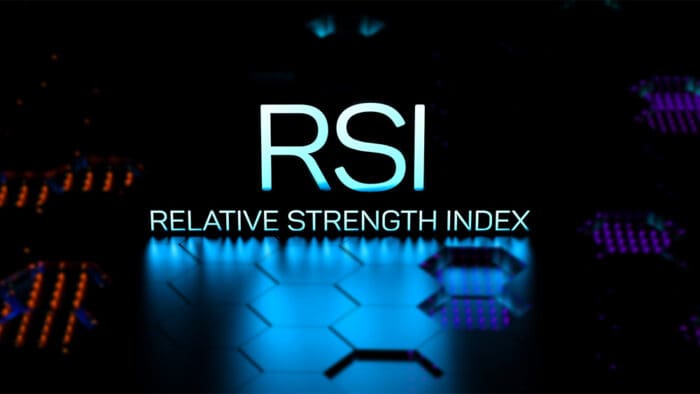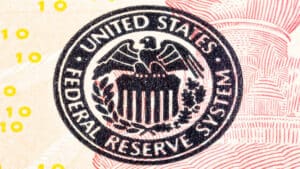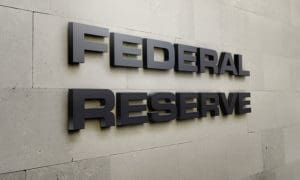Can the Fed balance its objective of fighting inflation—and help save banks in turmoil? Stephen Dover, Head of Franklin Templeton Institute, opines.
Can central banks simultaneously provide liquidity to banks suffering sharp deposit withdrawals while also slowing money and credit creation by raising interest rates? In essence, can central banks quantitatively tighten and quantitatively ease at the same time?
The actions of the Federal Reserve (Fed) in recent weeks raise these questions. Since the Silicon Valley Bank (SVB) failure, the Fed’s balance sheet has swelled by over US$290 billion1 as the central bank acted as a “lender of last resort” to US banks teetering on the edge of failure. The increase in the Fed’s balance sheet via loans to troubled banks unwound nearly half of its 2022 balance sheet contraction (quantitative tightening).
For investors, the question arises: Can the Fed save banks and achieve its inflation objective at the same time? Must it choose between competing aims?
The answer is yes, the Fed can do both. No trade-off is required. In what follows, we explain why and how—but we add a caveat. Just because the Fed can multitask does not guarantee that it will multitask well. Central banking is always more art than science, and the Fed has a challenging job ahead of it.
Monetary policy versus crisis management
There are several keys to understanding how the Fed can address two challenges simultaneously.
Quantitative easing (QE) is a monetary policy strategy central banks use, when appropriate, to purchase securities (i.e., bonds), to boost commercial bank reserves and their capacity to lend. Quantitative easing also has a second impact; namely via direct purchases, it lowers longer-term interest rates. Both mechanisms stimulate economic activity.
The opposite process, called quantitative tightening (QT), takes place when central banks unwind their balance sheets by selling bonds, which reduces commercial bank reserves (and hence lending capacity) and pushes up longer-term interest rates.
When banks such as SVB experience bank runs, their depositors are shifting their preference (in real time and very fast) from bank deposits to either cash or to bank deposits with safer banks. To prevent a disorderly bank failure, the Fed will make loans to banks suffering large depositor withdrawals. But those loans don’t create excess reserves or fresh lending opportunities. Rather, loans from the Fed replenish diminished reserves just as they replace deposits on the liability side of banks’ balance sheets. These actions don’t increase the money supply or loanable reserves, nor do they lead to a fall in economy-wide interest rates.
Of course, some depositors are merely switching deposits from failing banks to healthy ones, theoretically enabling those healthier banks to make more loans. But two factors will offset that impact. First, troubled banks requiring loans from the Fed to stay afloat will also cut their lending. The Fed also can simultaneously lend to struggling banks while selling bonds to healthy banks, withdrawing some of the Fed’s reserves and lending capacity. The Fed is not operationally or in any other way constrained from acting to prevent disorderly bank failures while also adjusting policy to meet its dual mandate of stable prices and maximum employment.
Presently, the Fed—despite the actions taken to stabilize a few troubled US banks—continues to sell its holdings of US Treasuries and mortgaged-backed securities (MBS) at a rate of US$95 billion per month. Its actions to prevent a disorderly collapse of various commercial banks has had no impact on its pursuit of QT. The net result is fewer bank reserves in aggregate, a tightening of credit conditions and—as we saw at the conclusion of the most recent Federal Open Market Committee meeting—a willingness (and ability) to keep hiking interest rates.
Here are some of the implications of the latest Fed actions:
- The Fed can have its cake and eat it too. While the massive increase in the Fed balance sheet reserves provides additional liquidity to select banks, its actions are not akin to QE. The Fed is responding to specific increases in money demand and portfolio shifts from deposits to cash at a few banks by making loans, not buying securities. And those banks are being wound down or sold off; they are not expanding their lending capacity. Meanwhile, the Fed is otherwise withdrawing bank reserves via asset sales (QT) and is hiking interest rates.
- The discount window does not involve a new money injection. Banks that borrow at the Fed’s discount window must deposit collateral in exchange for a loan. As a result, the Fed is exchanging less-liquid assets for more liquid ones—bonds for cash. This increases bank reserves only for banks that are experiencing reserve losses. And when properly conducted, is not increasing system-wide liquidity or lending. That is even more likely if, as can be expected, those troubled banks are forced to shrink their operations.
- Banks are given access to liquidity. The new facility the Fed has established, the Bank Term Funding Program (BTFP), is designed to help trouble banks meet depositor and creditor demands without having to sell assets (i.e., their bond portfolios) at a loss. In doing so, the Fed is lending at par against bonds that may be worth less than par, which could be seen as a sign of easing. But that measure should not be seen in isolation. To begin, it is a facility for banks facing funding problems, which are ones unlikely to be increasing their stock of illiquid loans. Second, The Fed can absorb whatever additional system-wide liquidity BTFP creates through the sale of bonds to the remainder of the banking sector via open market operations.
- Long-term rates are probably not affected. Because open market operations can offset emergency lending facilities in monetary policy terms, the impact of the Fed’s actions should not have a material impact on interest rates, lending, spending or broader asset prices. The fact that nominal interest rates have fallen since the travails of SVB is not, therefore, due to a change in the Fed’s monetary policy stance, but rather reflects the probability that banking stresses will do some of the Fed’s work for it; namely, it will lead to some additional tightening of credit conditions as all banks adopt a more cautious approach toward their clients.
- QT continues. QT is a monetary-policy tool, whereas emerging lending facilities are intended to alleviate specific strains in the banking system. The pace of QT remains unchanged, as close observers of the Fed recognize. For example, according to the median forecast from the Survey of Primary Dealers, the Fed’s balance sheet is expected to fall from 35% to 25% of nominal US gross domestic product by the end of next year.2
- How important is deposit reallocation? As noted, some of the shift of depositors out of at-risk banks found a new home in large banks, which are perceived to be “too big to fail.” Those banks clearly have higher deposits and reserves, placing them in a position to increase lending or securities purchases. Some might think the result is akin therefore to monetary stimulus. In all likelihood, that is wrong. The Fed is aware of deposit reallocation and has the tools to address it. Via bond sales, it can absorb any excess liquidity and, in doing so, it can raise interest rates. The Fed forcefully demonstrated that ability by hiking rates 25 basis points in March, even though jitters in the banking system had not fully abated.3
In sum, we can say two things with equal conviction.
First, there is nothing that prevents the Fed from saving banks and simultaneously pursuing its monetary policy objective of tightening to fight inflation. The Fed has enough instruments to do both.
Second, just because it can do both does not ensure that it will be successful in achieving its aims. Other banking or financial ructions could yet emerge. Many observers view the situation in US commercial real estate with trepidation, as a potential flashpoint for the next crisis. Equally, the Fed could still get it wrong on the economy. It might overtighten and produce an unnecessarily deep recession, or it might not tighten enough and end up having to battle endemic inflation.
The good news is the Fed has the tools to meet the challenge. The question is, will it use them to good effect?
—
Originally Posted April 19, 2023 – Quick Thoughts: The Fed—quantitative tightening or quantitative easing?
WHAT ARE THE RISKS?
All investments involve risks, including possible loss of principal. The value of investments can go down as well as up, and investors may not get back the full amount invested. Stock prices fluctuate, sometimes rapidly and dramatically, due to factors affecting individual companies, particular industries or sectors, or general market conditions. Bond prices generally move in the opposite direction of interest rates. Thus, as prices of bonds in an investment portfolio adjust to a rise in interest rates, the value of the portfolio may decline. Investments in lower-rated bonds include higher risk of default and loss of principal. Changes in the credit rating of a bond, or in the credit rating or financial strength of a bond’s issuer, insurer or guarantor, may affect the bond’s value. In general, an investor is paid a higher yield to assume a greater degree of credit risk. The risks associated with higher-yielding, lower-rated debt securities include higher risk of default and loss of principal. Investments in foreign securities involve special risks including currency fluctuations, economic instability and political developments.
IMPORTANT LEGAL INFORMATION
This material is intended to be of general interest only and should not be construed as individual investment advice or a recommendation or solicitation to buy, sell or hold any security or to adopt any investment strategy. It does not constitute legal or tax advice. This material may not be reproduced, distributed or published without prior written permission from Franklin Templeton.
The views expressed are those of the investment manager and the comments, opinions and analyses are rendered as at publication date and may change without notice. The underlying assumptions and these views are subject to change based on market and other conditions and may differ from other portfolio managers or of the firm as a whole. The information provided in this material is not intended as a complete analysis of every material fact regarding any country, region or market. There is no assurance that any prediction, projection or forecast on the economy, stock market, bond market or the economic trends of the markets will be realized. The value of investments and the income from them can go down as well as up and you may not get back the full amount that you invested. Past performance is not necessarily indicative nor a guarantee of future performance. All investments involve risks, including possible loss of principal.
Any research and analysis contained in this material has been procured by Franklin Templeton for its own purposes and may be acted upon in that connection and, as such, is provided to you incidentally. Data from third party sources may have been used in the preparation of this material and Franklin Templeton (“FT”) has not independently verified, validated or audited such data. Although information has been obtained from sources that Franklin Templeton believes to be reliable, no guarantee can be given as to its accuracy and such information may be incomplete or condensed and may be subject to change at any time without notice. The mention of any individual securities should neither constitute nor be construed as a recommendation to purchase, hold or sell any securities, and the information provided regarding such individual securities (if any) is not a sufficient basis upon which to make an investment decision. FT accepts no liability whatsoever for any loss arising from use of this information and reliance upon the comments, opinions and analyses in the material is at the sole discretion of the user.
Products, services and information may not be available in all jurisdictions and are offered outside the U.S. by other FT affiliates and/or their distributors as local laws and regulation permits. Please consult your own financial professional or Franklin Templeton institutional contact for further information on availability of products and services in your jurisdiction.
Issued in the U.S. by Franklin Distributors, LLC, One Franklin Parkway, San Mateo, California 94403-1906, (800) DIAL BEN/342-5236, franklintempleton.com – Franklin Distributors, LLC, member FINRA/SIPC, is the principal distributor of Franklin Templeton U.S. registered products, which are not FDIC insured; may lose value; and are not bank guaranteed and are available only in jurisdictions where an offer or solicitation of such products is permitted under applicable laws and regulation.
CFA® and Chartered Financial Analyst® are trademarks owned by CFA Institute.
1. Source: US Balance Sheet & Flows of MFI Sector, Federal Reserve Banks, Assets, Total, All Banks, USD, Macrobond.
2. Source: Bloomberg Intelligence. March 28, 2023.
3. Source: “The Bank Panic Will Challenge the Fed, but Its Inflation Fight Isn’t Over,” Barron’s. March 27, 2023.
Disclosure: Franklin Templeton
The comments, opinions and analyses expressed herein are for informational purposes only and should not be considered individual investment advice or recommendations to invest in any security or to adopt any investment strategy. Because market and economic conditions are subject to rapid change, comments, opinions and analyses are rendered as of the date of the posting and may change without notice. The material is not intended as a complete analysis of every material fact regarding any country, region, market, industry, investment or strategy.
This information is intended for US residents only.
Disclosure: Interactive Brokers Third Party
Information posted on IBKR Campus that is provided by third-parties does NOT constitute a recommendation that you should contract for the services of that third party. Third-party participants who contribute to IBKR Campus are independent of Interactive Brokers and Interactive Brokers does not make any representations or warranties concerning the services offered, their past or future performance, or the accuracy of the information provided by the third party. Past performance is no guarantee of future results.
This material is from Franklin Templeton and is being posted with its permission. The views expressed in this material are solely those of the author and/or Franklin Templeton and Interactive Brokers is not endorsing or recommending any investment or trading discussed in the material. This material is not and should not be construed as an offer to buy or sell any security. It should not be construed as research or investment advice or a recommendation to buy, sell or hold any security or commodity. This material does not and is not intended to take into account the particular financial conditions, investment objectives or requirements of individual customers. Before acting on this material, you should consider whether it is suitable for your particular circumstances and, as necessary, seek professional advice.



















Join The Conversation
For specific platform feedback and suggestions, please submit it directly to our team using these instructions.
If you have an account-specific question or concern, please reach out to Client Services.
We encourage you to look through our FAQs before posting. Your question may already be covered!